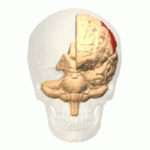Inattentional blindness
Psychological lack of attention
| Psychology |
|---|
|
|
Inattentional blindness is a psychological phenomenon that occurs when an individual fails to perceive an unexpected stimulus in plain sight, due to a lack of attention. This phenomenon is not due to any visual defects or deficits, but rather the limitations of human attention and perception.
Overview[edit | edit source]
Inattentional blindness is a significant concept in the field of cognitive psychology, illustrating how attention can be selective and limited. It demonstrates that when individuals are focused on a particular task or object, they may not notice other stimuli, even if they are directly in their line of sight. This phenomenon is often illustrated through experiments where participants are asked to focus on a specific task, such as counting the number of times a ball is passed between players, and subsequently fail to notice unexpected events, like a person in a gorilla suit walking through the scene.
Mechanisms[edit | edit source]
The mechanisms behind inattentional blindness involve the brain's attention systems. When attention is directed towards a specific task, the brain allocates its resources to process the relevant information, often at the expense of other stimuli. This selective attention is crucial for effective functioning, allowing individuals to focus on important tasks without being overwhelmed by irrelevant information. However, it also means that unexpected stimuli can go unnoticed if they are not the focus of attention.
Factors Influencing Inattentional Blindness[edit | edit source]
Several factors can influence the likelihood of experiencing inattentional blindness:
- Task Difficulty: More complex tasks require greater cognitive resources, increasing the likelihood of inattentional blindness.
- Expectation: If an individual does not expect an event to occur, they are less likely to notice it.
- Attention Load: The amount of attention required by the primary task can affect the ability to notice other stimuli.
- Familiarity: Familiarity with the environment or task can reduce inattentional blindness, as individuals are more likely to notice unexpected changes.
Applications and Implications[edit | edit source]
Inattentional blindness has important implications in various fields, including aviation, driving, and healthcare. For instance, in aviation, pilots may fail to notice unexpected changes in the cockpit if they are focused on specific instruments. Similarly, drivers may not see pedestrians or other vehicles if they are distracted by other tasks. In healthcare, inattentional blindness can lead to medical errors if healthcare professionals do not notice critical changes in a patient's condition.
Research and Experiments[edit | edit source]
Research on inattentional blindness has been conducted through various experiments, often involving visual tasks where participants are asked to focus on specific elements while unexpected stimuli are introduced. These experiments have consistently shown that a significant number of participants fail to notice the unexpected stimuli, highlighting the limitations of human attention.
Related Concepts[edit | edit source]
Inattentional blindness is related to other cognitive phenomena such as change blindness, where individuals fail to notice changes in a visual scene, and attentional blink, where a rapid sequence of stimuli causes a temporary lapse in attention.
Related pages[edit | edit source]
Search WikiMD
Ad.Tired of being Overweight? Try W8MD's physician weight loss program.
Semaglutide (Ozempic / Wegovy and Tirzepatide (Mounjaro / Zepbound) available.
Advertise on WikiMD
|
WikiMD's Wellness Encyclopedia |
| Let Food Be Thy Medicine Medicine Thy Food - Hippocrates |
Translate this page: - East Asian
中文,
日本,
한국어,
South Asian
हिन्दी,
தமிழ்,
తెలుగు,
Urdu,
ಕನ್ನಡ,
Southeast Asian
Indonesian,
Vietnamese,
Thai,
မြန်မာဘာသာ,
বাংলা
European
español,
Deutsch,
français,
Greek,
português do Brasil,
polski,
română,
русский,
Nederlands,
norsk,
svenska,
suomi,
Italian
Middle Eastern & African
عربى,
Turkish,
Persian,
Hebrew,
Afrikaans,
isiZulu,
Kiswahili,
Other
Bulgarian,
Hungarian,
Czech,
Swedish,
മലയാളം,
मराठी,
ਪੰਜਾਬੀ,
ગુજરાતી,
Portuguese,
Ukrainian
Medical Disclaimer: WikiMD is not a substitute for professional medical advice. The information on WikiMD is provided as an information resource only, may be incorrect, outdated or misleading, and is not to be used or relied on for any diagnostic or treatment purposes. Please consult your health care provider before making any healthcare decisions or for guidance about a specific medical condition. WikiMD expressly disclaims responsibility, and shall have no liability, for any damages, loss, injury, or liability whatsoever suffered as a result of your reliance on the information contained in this site. By visiting this site you agree to the foregoing terms and conditions, which may from time to time be changed or supplemented by WikiMD. If you do not agree to the foregoing terms and conditions, you should not enter or use this site. See full disclaimer.
Credits:Most images are courtesy of Wikimedia commons, and templates, categories Wikipedia, licensed under CC BY SA or similar.
Contributors: Prab R. Tumpati, MD

